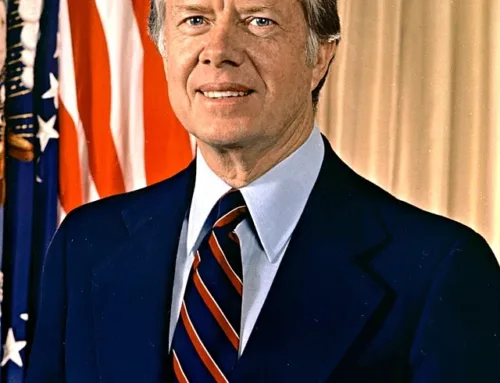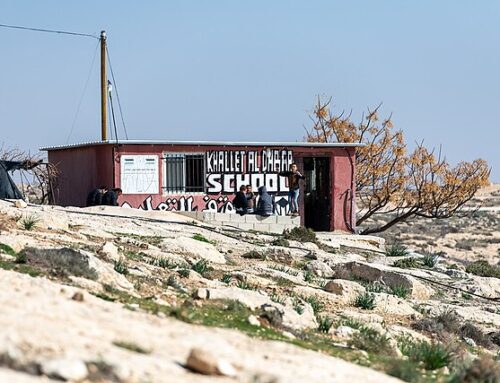Thomas G. Mitchell, Ph.D., an independent scholar, is a longtime contributor to our blog. He is the author most recently of “Likud Leaders” (McFarland, 2015).
While I’m not an expert on polling, and haven’t examined in detail the results of the final polls as compare with the final election results, I think I know how the results can be explained. There are two processes at work that Netanyahu employed during the final days: cannibalization and mobilization. Let’s look at both of them in turn.
The Israeli electorate is divided into blocs: e.g., the Arab vote, the Center-Left, the Center Right, the ultra-Orthodox, and the centrist floating vote. From election to election, voters will normally stay loyal to their bloc, but not necessarily to their party. This is because blocs, much more than parties, are built around ideological identity, whereas parties often are created to serve the ambitions of politicians.
In the final week, Netanyahu made the case that he needed the Likud to be the largest party so that he would get the first chance at forming a coalition. This caused many floating voters on the Right to shift from supporting Naftali Bennet’s Jewish Home party and some from Avigdor Lieberman’s Yisrael Beitenu to return to supporting the Likud. Jewish Home went from 12 to eight seats and Yisrael Beitenu barely passed the barrier to get into the Knesset with five seats (four is the floor). In other words, Netanyahu achieved more of a consolidation rather than an expansion of the Right.
The rise in the number of seats for the Zionist Union came at the expense of both Yesh Atid, which shrunk from 19 seats to twelve and Kadima, which disappeared, as well as Livni’s Hatenua, which was at least temporarily absorbed by Labor. One wonders if Hatenua will become a faction within Labor or return to its independent status? Judging from the performance of Lieberman’s party, Livni would be much wiser becoming part of a larger party. This is what Ezer Weizman did after exiting the Likud and briefly forming his own party for the 1984 election. Livni, like Weizman, could even end her political career as a future president, joining Peres and Weizman as symbols of peace when there is no peace.
The other thing that Netanyahu did was to use the fear of the Arab vote to mobilize his voters. In apartheid South Africa, the ruling National Party specialized in what was known as swart gevaar politics—”black danger” politics. First in the 1930s and 1940s, it was the danger of cheap black labor competing for jobs with unskilled whites; then in the 1960s, ‘70s and ‘80s, it was the danger of black terrorists murdering whites in their beds. Since blacks did not have the vote in South Africa, the danger came from the weak policies of the “deluded” English-speaking liberals.
Netanyahu uses the Muslims in the same way: the danger of Iran destroying Israel with a nuclear bomb and the danger of Arab voters forcing a Center-Left government to concede the West Bank to the Palestinians. The Likud under-the-radar mobilization effort was similar to the 2004 GOP get-out-the-vote effort that won re-election for George W. Bush. The Israeli equivalent of the GOP mega-churches were the settlers from the West Bank.
Netanyahu developed his whole political career around being an expert on terrorism thanks to his military service in the elite Sayeret Matkal commando unit, and the death of his older brother Yoni, as the heroic commander at Entebbe in 1976. After entering Israeli politics in 1988 with his election to the Knesset, he quickly emerged as the leader of the Likud and consolidated his position by opposing Oslo. In 2009, he made his big concession with his Bar-Ilan speech by recognizing a two-state solution in theory. But in practice, he set conditions that he knew were unacceptable to the Palestinians. Then last week he took two states off the table.
By veering towards the Right and granting interviews to the media during the final week, Bibi was able both to mobilize his followers and to strip away many of those from Naftali Bennet’s Jewish Home party. This will make the Right much easier to deal with during subsequent coalition negotiations. He can grant the settlement demands of Jewish Home, while keeping the demands for a draft of the ultra-Orthodox as a stick with which to threaten Shas and United Torah Judaism.
Netanyahu now has two choices: either to form a religious-Right government featuring the Likud, Moshe Kohlon’s Kulanu with ten seats, Jewish Home with eight seats, Shas with seven seats, United Torah Judaism (Ashkenazi ultra-Orthodox) with six seats, and Yisrael Beitenu with five seats for a total of 66; or to form a national unity government with Zionist Union/Labor and either Kulanu or one of the religious parties.
My guess is that he will form a government of the Right, while using the threat to form a national unity government to soften the demands of potential coalition partners and to keep them in line once the coalition is formed. Because the bargaining power of Labor is relatively weak, and there is considerable opposition within the party to joining a national unity government, its formation seems unlikely. In the past, national unity governments were formed under very special circumstances: the emergency situation in June 1967, and when electoral deadlock necessitated it in 1984. If Obama signs a nuclear deal with Iran, perhaps Bibi will declare it to be a national emergency and form a national unity government, but this appears unlikely.
After having caused a breakdown in relations with the Obama administration, Netanyahu now faces a situation in which he has to govern for two years until the new U.S. President is inaugurated in January 2017. Obama will be sorely tempted to let the Palestinians win more support in the UN by not employing the American veto. But he will have to keep in mind how this will affect the fortunes of the Democratic nominee in 2016.





Zak, are you so incredibly clsueles that you think that Satmar are the only hareidi anti-Zionists? since it’s Israel and not Williamsburg, there is no reason to conclude that it’s radical Satmars. There are other culprits, like Toldos Aharon or Netuurei Karta (which is not just radical Satmar. ) Moreover, the text of the document complicates things by making reference to military service. The current debate over military service and the exclusion of the Hareidi parties from the gov’t have radicalized things, and whoever put this up, it’s fair to say that the statements regarding the evils of Zionism due to the proposal to draft hareidim is perfectly in line with, if not an outright majority, certainly a huge proportion of hareidi Jewry.
Dear Anon yg stupid lg bangang…malas nk beformal english ngan ko yg bangng tu..sndri tau la tahap kebagusan English aku camana..ke ko tu yg bengap..ni ruangan gosip,bukan nak amb exam pun..at least ko paham gak kan maksud aku..kah3 bodoh la ko niHot debate. What do you think? 11 13
scrive:classic track iknow its a risk to use this beat but check what i did to it kept it orginal but but my own creativity on it !!! its on my channel as soon as u? link in let me know what ya think im a artist that breaths real hip hop like diss !!!!
Hey. Very cool web site!! Guy .. Excellent .. Superb .. I will bookmark your site and take the feeds additionally…I am happy to find numerous useful information right here in the post. Thanks for sharing…